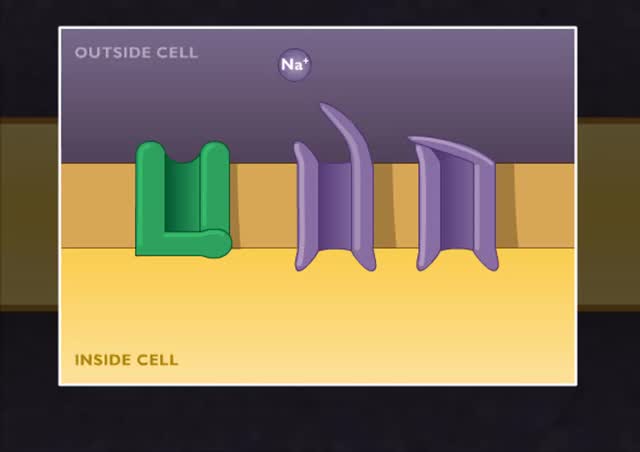Phases of an Action Potential - Resting Potential, Threshold, Rising, Falling, & Recovery Phases
By: HWC
Date Uploaded: 05/30/2020
Tags: homeworkclinic.com Homework Clinic HWC neuron's membrane resting potential threshold the rising phase the falling phase the recovery phase electrochemical forces Voltage gated sodium channels Na+ channels potassium channels Phases of An Action Potential
In this tutorial, we will review the phases of an action potential measured from a small area of a neuron's membrane. The action potential can be divided into five phases: the resting potential, threshold, the rising phase, the falling phase, and the recovery phase. When the neuron is at rest, only a small subset of potassium channels are open, permitting IC ions to enter and exit the cell based on electrochemical forces. Note that there is no NET movement of K4 ions; for each K' ion that leaves the cell, another returns, maintaining the membrane potential at a constant value. As a depolarizing stimulus arrives at our segment of the membrane, a few Na+ channels open, permitting Na+ ions to enter the neuron. The increase in positive ions inside the cell depolarizes the membrane potential (making it less negative), and brings it closer to the threshold at which an action potential is generated. If the depolarization reaches the threshold potential, additional voltage-gated sodium channels open. As positive Na+ ions rush into the cell, the voltage across the membrane rapidly reverses and reaches its most positive value. At the peak of the action potential, two processes occur simultaneously. First, many of the voltage-gated sodium channels begin to close. Second, many more potassium channels open, allowing positive charges to leave the cell. This causes the membrane potential to begin to shift back towards the resting membrane potential. As the membrane potential approaches the resting potential, voltage-gated potassium channels are maximally activated and open. The membrane actually repolarizes beyond the resting membrane voltage. This undershoot occurs because more potassium channels are open at this point than during the membrane's resting state, allowing more positively charged K' ions to leave the cell. The return to steady state continues as the additional potassium channels that opened during the action potential now close. The membrane potential is now determined by the subset of potassium channels that are normally open during the membrane's resting state.
Add To
You must login to add videos to your playlists.
Advertisement












Comments
0 Comments total
Sign In to post comments.
No comments have been posted for this video yet.